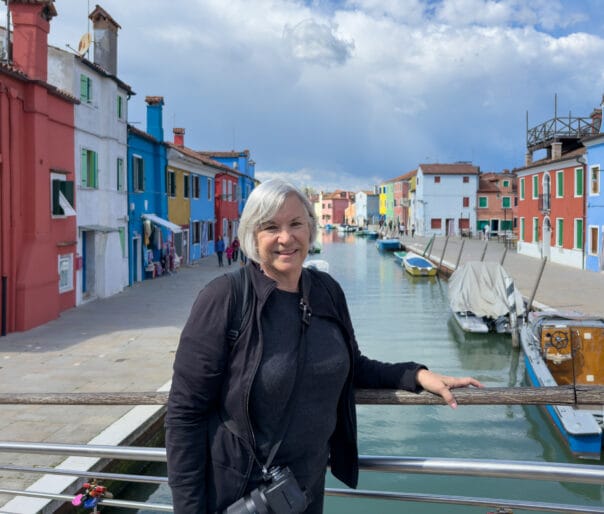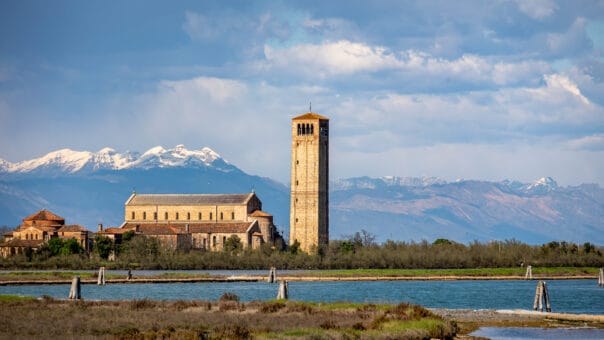You can take a short vaporetto ride from bustling Venice to Burano, a nearby tiny island bursting with vibrant colors and a special kind of magic. Its candy-colored houses line sleepy canals where fishermen tend their boats, and lace curtains flutter in the breeze. I spent a half-day wandering its winding alleys, taking hundreds of photos, and soaking in the island’s artistic spirit and old-world character.
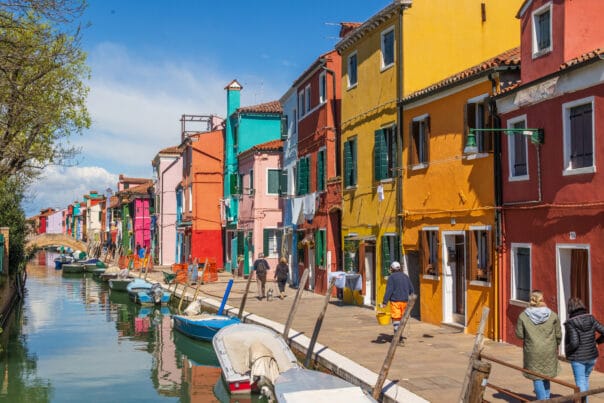
As my travel buddy and I approached, we saw Burano’s belltower dominating the skyline and colors radiating from every house and building on the island.
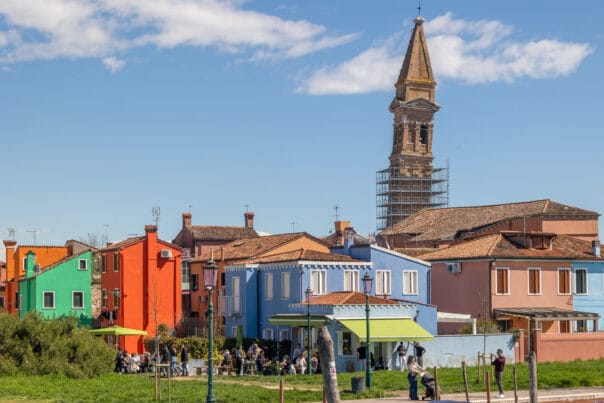
Burano’s Allure
From the moment I stepped off the boat, Burano felt like a kaleidoscope—shades of tangerine, fuchsia, mint green, and cobalt blue reflecting in the canals. I’d call it a photographer’s delight. Legend says the fishermen painted their houses in vivid colors so they could find their way home through the fog. Whether myth or truth, every corner is a photo waiting to be taken.
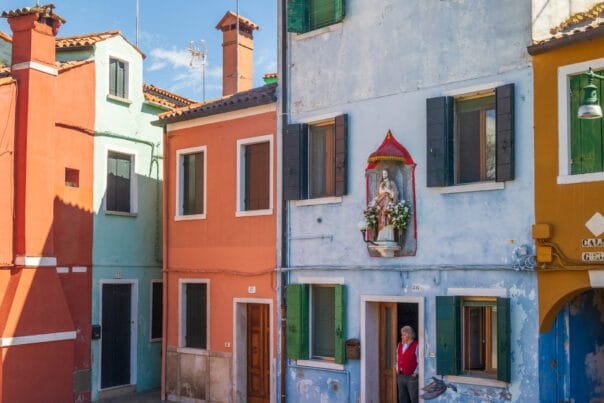
Though Burano is small, just 52 acres, it carries a rich identity. Once known for its fishing economy, it became famous during the Renaissance for its delicate handmade lace, a tradition kept alive by the skilled women who still weave intricate patterns today. I popped into a few artisan shops, admiring the patience and precision required for every piece.
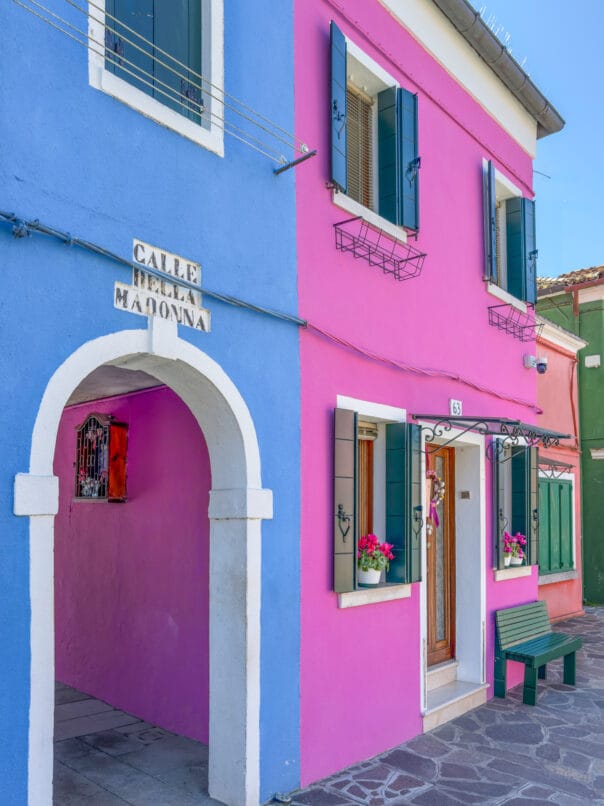
The Leaning Tower of San Martino
Then there’s the bell tower—Il Campanile di San Martino Vescovo. I’d first seen it 20 years ago, when I previously spent a few hours in Burano. But, now it was surrounded with scaffolding for needed repairs. The lean is so noticeably that you can spot the tilt from almost anywhere on the island. It stands next to the Church of San Martino, a modest 16th-century church dedicated to St. Martin, whose life is depicted in a large painting inside the nave.
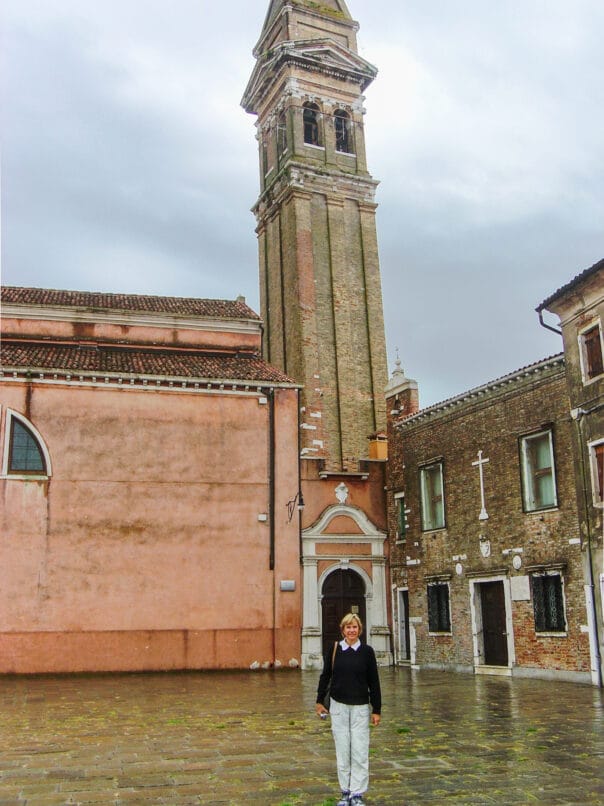
The tower was built between 1703 and 1714, constructed on unstable ground (as is common in the Venetian Lagoon). Like its more famous cousin in Pisa, the soft, marshy soil began to shift over time, causing the structure to lean. Though the tower rises about 174 feet, it’s the angle that captures your attention. By some estimates, it leans almost 6 feet off center—yet it still stands, previously anchored and reinforced to prevent further tilt.
The tower has weathered centuries of wind, tide, and time. It’s topped by a statue of the angel Gabriel, which—due to the lean—looks like it’s perpetually taking flight. Locals have come to see the tower’s slant not as a flaw, but as a beloved quirk. It’s a reminder that even imperfect things can be enduring.
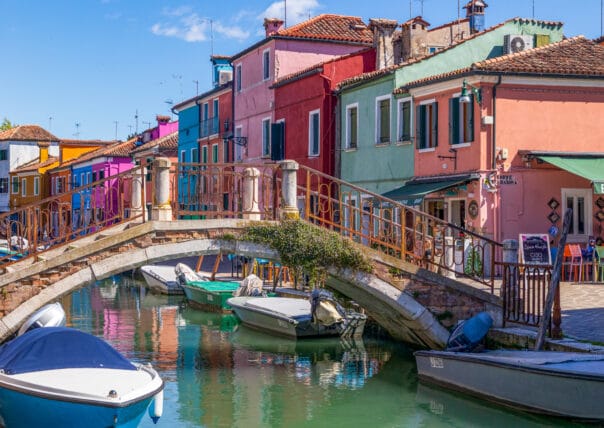
What to See and Do in Burano
After lunch at a canal-side trattoria (fresh seafood and risotto, naturally), I spent the rest of the afternoon simply wandering Burano.
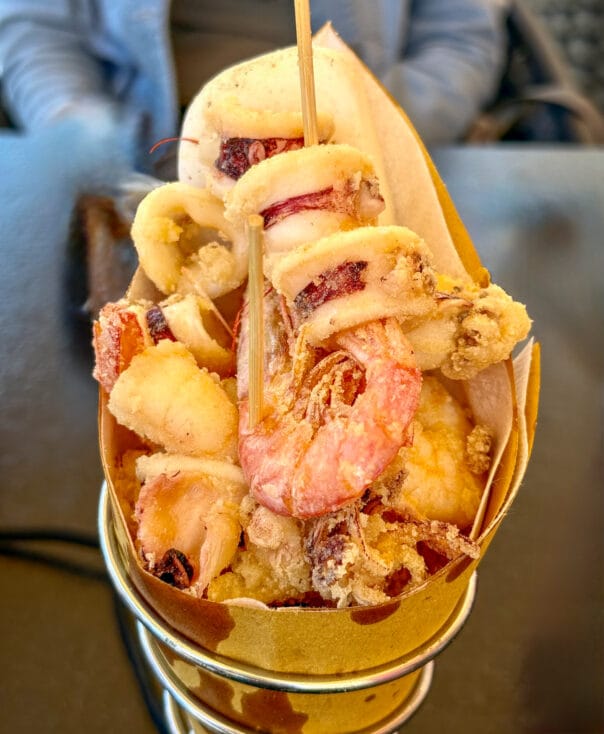
I saw laundry hanging to dry, a school boy coming home, an old lady cleaning her door. I chatted with a few shopkeepers, bought a lace bookmark as a souvenir, and enjoyed a gelato while sitting on a quiet dock.
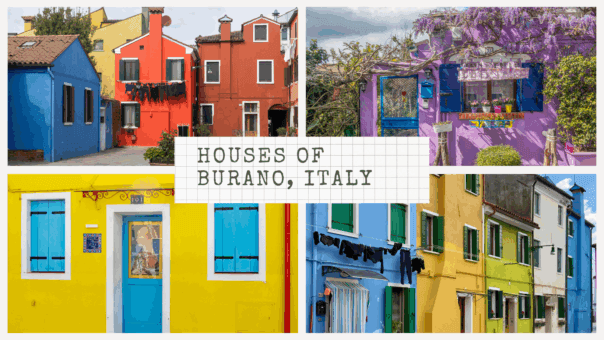
I loved the back alleys and open courtyards. Found an almost secret lilac hued garden, and reveled in the reflections on the canals.
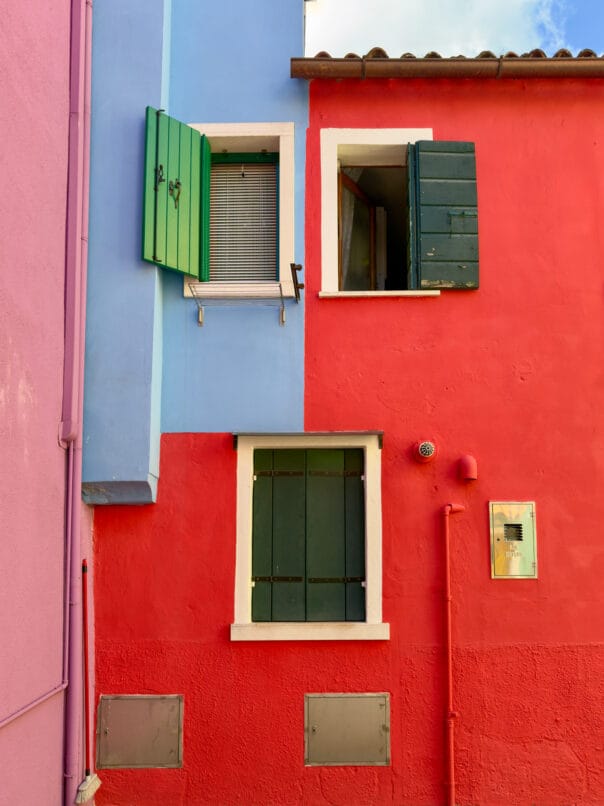
As the sun began to dip, the colors of the houses glow. We ended the afternoon with gelato by the water’s edge before heading off for Torcello before returning to Venice. (Read my Torcello story here: https://bylandersea.com/2025/06/a-quiet-ascent-into-history-a-visit-to-torcello/.
Returning to Venice
By the time we returned to Venice, golden hour was in full swing. The island’s colors deepened as if the island was lit from within. Visit Venice and her nearby islands at least one in your life.
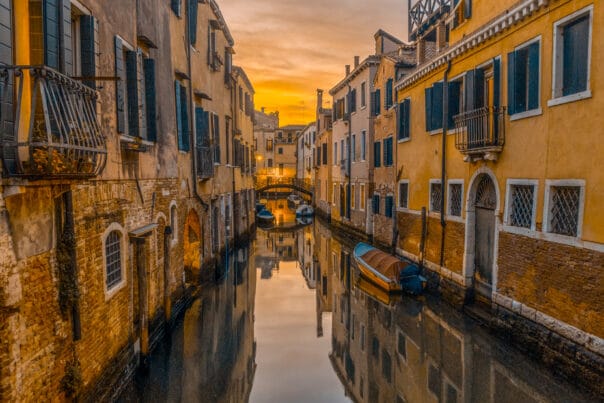
Planning a Visit?
Burano is just 40-45 minutes from Venice by vaporetto (water bus), and it’s perfect for a half- or full-day trip. Pair it with a stop in nearby Murano (famous for its glassmaking) or visit all three islands on a full-day outing, each with a distinctive identity.
